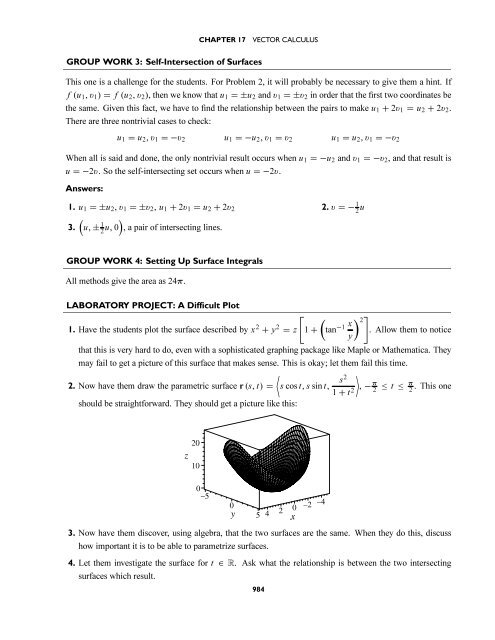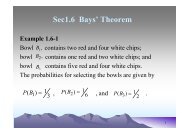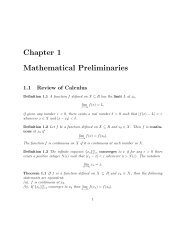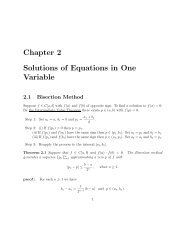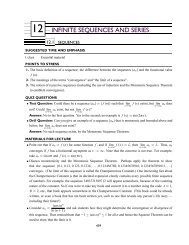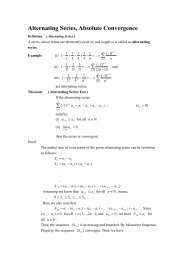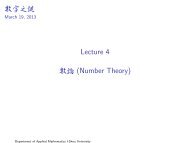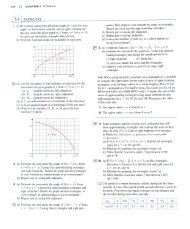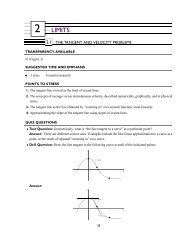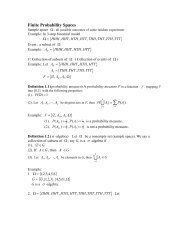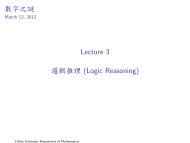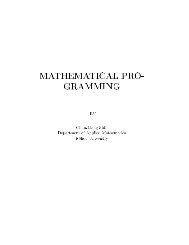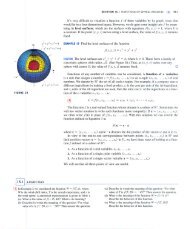17 VECTOR CALCULUS
17 VECTOR CALCULUS
17 VECTOR CALCULUS
Create successful ePaper yourself
Turn your PDF publications into a flip-book with our unique Google optimized e-Paper software.
CHAPTER <strong>17</strong><br />
<strong>VECTOR</strong> <strong>CALCULUS</strong><br />
GROUP WORK 3: Self-Intersection of Surfaces<br />
This one is a challenge for the students. For Problem 2, it will probably be necessary to give them a hint. If<br />
f (u 1 ,v 1 ) = f (u 2 ,v 2 ), then we know that u 1 =±u 2 and v 1 =±v 2 in order that the first two coordinates be<br />
the same. Given this fact, we have to find the relationship between the pairs to make u 1 + 2v 1 = u 2 + 2v 2 .<br />
There are three nontrivial cases to check:<br />
u 1 = u 2 ,v 1 =−v 2 u 1 =−u 2 ,v 1 = v 2 u 1 = u 2 ,v 1 =−v 2<br />
When all is said and done, the only nontrivial result occurs when u 1 =−u 2 and v 1 =−v 2 , and that result is<br />
u =−2v. So the self-intersecting set occurs when u =−2v.<br />
Answers:<br />
1. u 1 =±u 2 , v 1 =±v 2 , u 1 + 2v 1 = u 2 + 2v 2 2. v =− 1 2 u<br />
)<br />
3.<br />
(u, ± 1 2 u, 0 , a pair of intersecting lines.<br />
GROUP WORK 4: Setting Up Surface Integrals<br />
All methods give the area as 24π.<br />
LABORATORY PROJECT: A Difficult Plot<br />
[<br />
1. Have the students plot the surface described by x 2 + y 2 = z 1 +<br />
(<br />
tan −1 x ) ] 2<br />
. Allow them to notice<br />
y<br />
that this is very hard to do, even with a sophisticated graphing package like Maple or Mathematica. They<br />
may fail to get a picture of this surface that makes sense. This is okay; let them fail this time.<br />
〈<br />
s 2 〉<br />
2. Now have them draw the parametric surface r (s, t) = s cos t, s sin t,<br />
1 + t 2 , − π 2 ≤ t ≤ π 2<br />
. This one<br />
should be straightforward. They should get a picture like this:<br />
3. Now have them discover, using algebra, that the two surfaces are the same. When they do this, discuss<br />
how important it is to be able to parametrize surfaces.<br />
4. Let them investigate the surface for t ∈ R. Ask what the relationship is between the two intersecting<br />
surfaces which result.<br />
984


